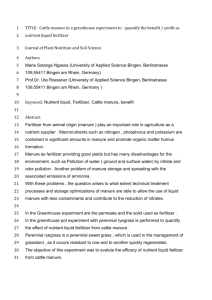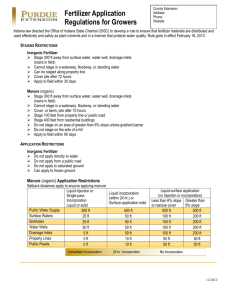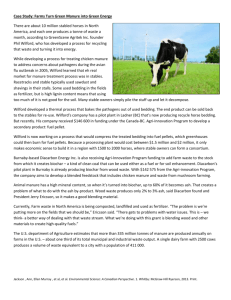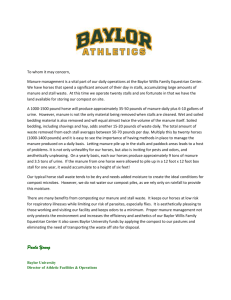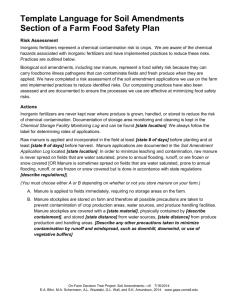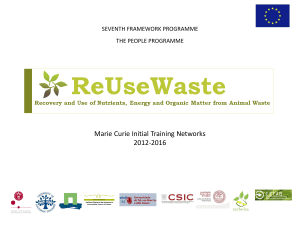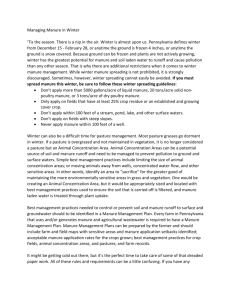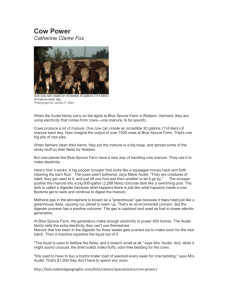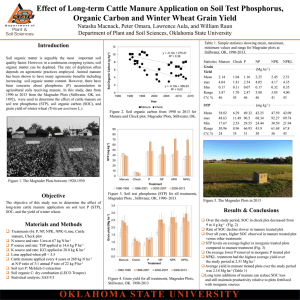Natural Resources Approach for Sustainable Crop Production for
advertisement
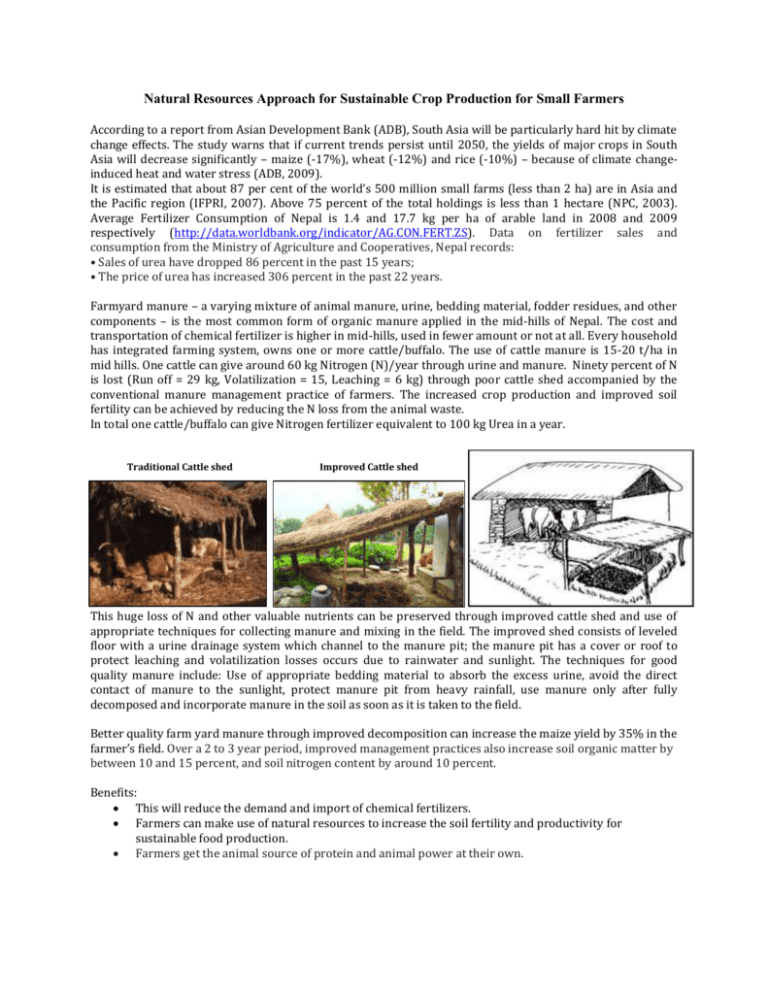
Natural Resources Approach for Sustainable Crop Production for Small Farmers According to a report from Asian Development Bank (ADB), South Asia will be particularly hard hit by climate change effects. The study warns that if current trends persist until 2050, the yields of major crops in South Asia will decrease significantly – maize (-17%), wheat (-12%) and rice (-10%) – because of climate changeinduced heat and water stress (ADB, 2009). It is estimated that about 87 per cent of the world’s 500 million small farms (less than 2 ha) are in Asia and the Pacific region (IFPRI, 2007). Above 75 percent of the total holdings is less than 1 hectare (NPC, 2003). Average Fertilizer Consumption of Nepal is 1.4 and 17.7 kg per ha of arable land in 2008 and 2009 respectively (http://data.worldbank.org/indicator/AG.CON.FERT.ZS). Data on fertilizer sales and consumption from the Ministry of Agriculture and Cooperatives, Nepal records: • Sales of urea have dropped 86 percent in the past 15 years; • The price of urea has increased 306 percent in the past 22 years. Farmyard manure – a varying mixture of animal manure, urine, bedding material, fodder residues, and other components – is the most common form of organic manure applied in the mid-hills of Nepal. The cost and transportation of chemical fertilizer is higher in mid-hills, used in fewer amount or not at all. Every household has integrated farming system, owns one or more cattle/buffalo. The use of cattle manure is 15-20 t/ha in mid hills. One cattle can give around 60 kg Nitrogen (N)/year through urine and manure. Ninety percent of N is lost (Run off = 29 kg, Volatilization = 15, Leaching = 6 kg) through poor cattle shed accompanied by the conventional manure management practice of farmers. The increased crop production and improved soil fertility can be achieved by reducing the N loss from the animal waste. In total one cattle/buffalo can give Nitrogen fertilizer equivalent to 100 kg Urea in a year. Traditional Cattle shed Improved Cattle shed This huge loss of N and other valuable nutrients can be preserved through improved cattle shed and use of appropriate techniques for collecting manure and mixing in the field. The improved shed consists of leveled floor with a urine drainage system which channel to the manure pit; the manure pit has a cover or roof to protect leaching and volatilization losses occurs due to rainwater and sunlight. The techniques for good quality manure include: Use of appropriate bedding material to absorb the excess urine, avoid the direct contact of manure to the sunlight, protect manure pit from heavy rainfall, use manure only after fully decomposed and incorporate manure in the soil as soon as it is taken to the field. Better quality farm yard manure through improved decomposition can increase the maize yield by 35% in the farmer’s field. Over a 2 to 3 year period, improved management practices also increase soil organic matter by between 10 and 15 percent, and soil nitrogen content by around 10 percent. Benefits: This will reduce the demand and import of chemical fertilizers. Farmers can make use of natural resources to increase the soil fertility and productivity for sustainable food production. Farmers get the animal source of protein and animal power at their own.

